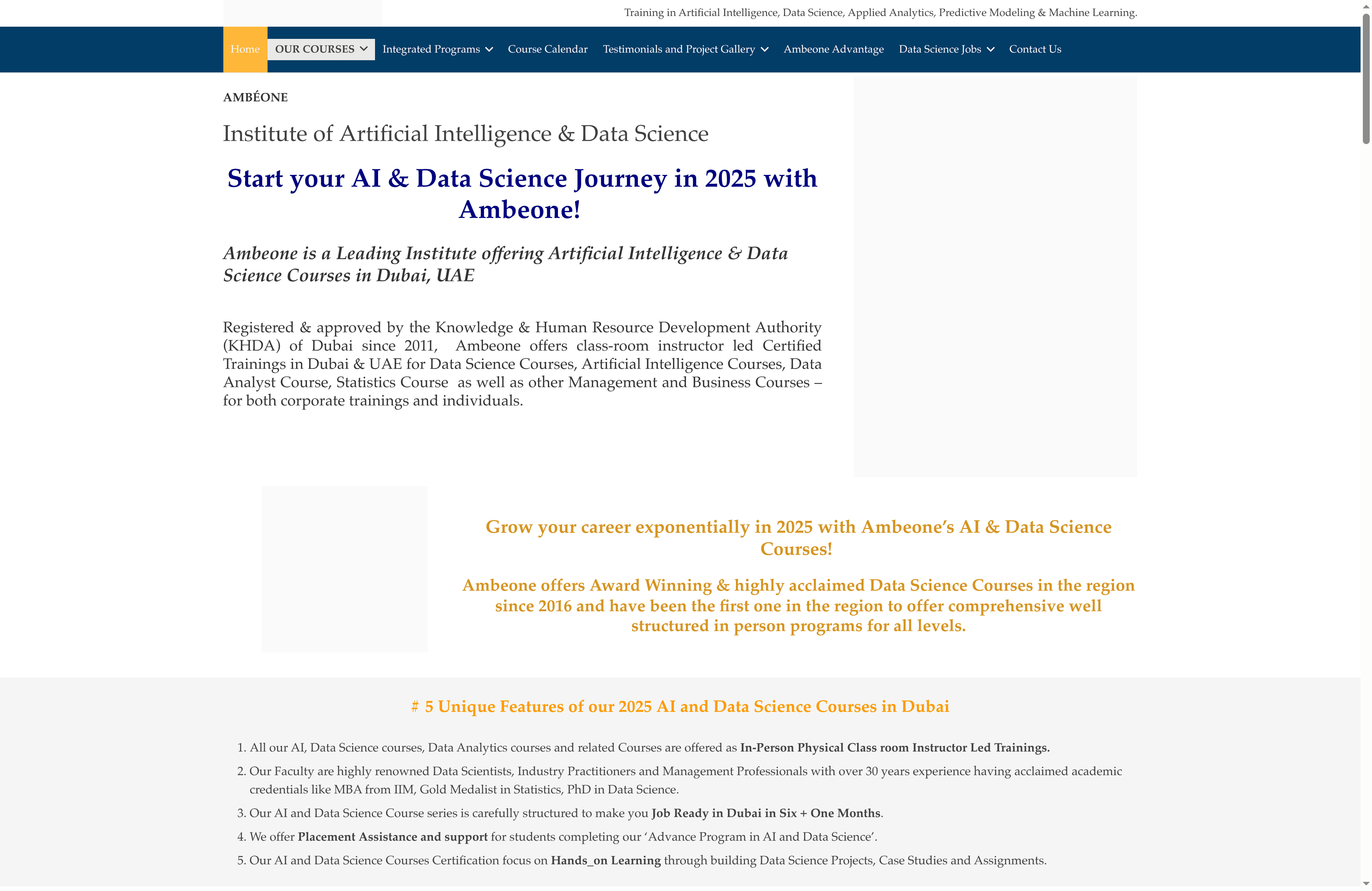What Is Data Interpretation? Complete Expert Guide
Over 90 percent of business leaders believe data interpretation is vital for smart decision making. Still, many feel unsure when it comes to turning raw numbers into useful findings. Whether you manage projects or analyze trends, understanding the basics of data interpretation helps you spot patterns, draw sound conclusions, and support choices with real evidence. Gaining these skills can make even complex information easier to work with and more valuable in daily tasks.
Table of Contents
- Understanding Data Interpretation Fundamentals
- Types of Data Interpretation Methods
- Step-by-Step Data Interpretation Process
- Business Applications and Use Cases
- Common Pitfalls and How to Avoid Them
Key Takeaways
| Point | Details |
|---|---|
| Importance of Data Interpretation | Data interpretation transforms raw data into actionable insights, aiding in decision-making and strategic planning. |
| Methodological Approaches | Two primary methods exist: qualitative analysis for understanding themes and contextual meanings, and quantitative analysis for objective measurement of numerical data. |
| Systematic Process | The data interpretation process includes critical stages such as data collection, cleaning, analysis, and visualization for clearer insights. |
| Common Pitfalls | Analysts should be aware of risks like misrepresentation of data and must apply robust critical thinking and rigorous methodologies to ensure accuracy in conclusions. |
Understanding Data Interpretation Fundamentals
Data interpretation is a critical analytical process that transforms raw data into meaningful insights. According to research from the Open University, it involves analyzing data sets to summarize their primary characteristics using statistical graphics and visualization methods. Unlike traditional hypothesis testing, data interpretation focuses on exploring datasets to uncover underlying patterns and connections.
Data interpretation goes beyond simple number crunching. It represents a systematic approach where professionals organize, analyze, and draw actionable conclusions from collected information. As research from TU Dublin indicates, this process requires methodically applying statistical techniques to answer specific research questions, translating complex data into comprehensible narratives.
The core objectives of data interpretation include:
- Identifying significant trends and patterns
- Reducing complex datasets into digestible insights
- Supporting evidence-based decision making
- Revealing potential relationships between different variables
- Providing a foundation for strategic planning and problem solving
Successful data interpretation demands a combination of technical skills and analytical thinking. Professionals must understand statistical methods, possess critical reasoning abilities, and maintain objectivity while examining datasets. Learn more about data analysis techniques in our comprehensive guide on data interpretation.
Types of Data Interpretation Methods
Data interpretation encompasses two primary methodological approaches: qualitative and quantitative analysis. According to research from ViewMetrics, these methods offer distinct strategies for extracting meaningful insights from different types of data. While they serve similar ultimate goals, each approach brings unique analytical capabilities to understanding complex information.

Here’s a comparison of qualitative and quantitative data interpretation methods:
| Aspect | Quantitative Analysis | Qualitative Analysis |
|---|---|---|
| Data Type | Numerical | Textual, Visual |
| Techniques | Statistical tests Mathematical modeling | Thematic analysis Content analysis |
| Outputs | Measurable outcomes Graphs & reports | Patterns & themes Narrative summaries |
| Common Sources | Surveys Experiments Performance metrics | Interviews Open responses Observations |
| Goal | Objective measurement | Deeper understanding |
In quantitative analysis, researchers focus on numerical data and employ statistical techniques to uncover patterns and relationships. This method involves mathematical modeling, statistical testing, and generating precise, measurable outcomes. Numerical datasets from surveys, experiments, and performance metrics are typically processed through quantitative interpretation to derive objective conclusions.
By contrast, qualitative analysis delves into non-numerical data such as text, images, and narrative content. This approach seeks to understand underlying concepts, themes, and contextual meanings. Researchers using qualitative methods often analyze:
- Interview transcripts
- Open-ended survey responses
- Observational field notes
- Video and audio recordings
- Textual documents
Learn more about advanced analytical techniques in our guide on Business Intelligence versus Data Analytics, which explores how different interpretation methods can be strategically applied across various business contexts.
Step-by-Step Data Interpretation Process
The data interpretation process is a systematic approach that transforms raw information into meaningful insights. According to research from HM Hub, this methodology involves several critical stages designed to extract valuable knowledge from collected data. Understanding these steps is essential for researchers and analysts seeking to derive accurate and actionable conclusions.
Data Collection and Organization marks the initial phase of interpretation. As research from TU Dublin indicates, this step requires meticulous attention to detail. Professionals must carefully gather relevant data, ensuring its accuracy and comprehensiveness. The key substeps include:
- Identifying appropriate data sources
- Collecting comprehensive datasets
- Removing duplicate or irrelevant information
- Standardizing data formats
- Preparing for subsequent analysis
The next critical stages involve data cleaning and statistical analysis. Here, researchers apply sophisticated techniques to transform raw data into meaningful insights. This process includes examining statistical patterns, identifying trends, and applying appropriate analytical methods to draw substantive conclusions. Visualization techniques like charts and graphs play a crucial role in making complex findings accessible and understandable.
Learn more about building statistically robust data science projects with our comprehensive nine-step guide, which provides advanced techniques for transforming data into strategic business intelligence.
Business Applications and Use Cases
Data interpretation has become a cornerstone of strategic decision-making across various business domains. According to research from ViewMetrics, organizations leverage data analysis to decode complex market dynamics, understand customer behavior, and drive operational excellence. Business intelligence transforms raw data into actionable insights that can fundamentally reshape corporate strategies.
In marketing and sales, customer behavior analysis emerges as a critical application of data interpretation. Companies use sophisticated analytical techniques to segment audiences, predict purchasing patterns, and personalize consumer experiences. This approach enables businesses to:
- Identify emerging market trends
- Develop targeted marketing campaigns
- Optimize product recommendations
- Predict customer churn
- Enhance customer engagement strategies
Operational performance represents another crucial domain where data interpretation delivers substantial value. Businesses apply analytical methods to optimize processes, reduce inefficiencies, and maximize resource allocation. By systematically examining performance metrics, organizations can identify bottlenecks, streamline workflows, and make data-driven operational improvements that directly impact bottom-line results.
Explore our comprehensive guide on Business Analytics using Data Science and Machine Learning to discover advanced techniques for transforming raw data into strategic business intelligence and competitive advantage.
Common Pitfalls and How to Avoid Them
Data interpretation is fraught with potential errors that can dramatically undermine analytical accuracy and decision-making effectiveness. According to research from ISPAT Guru, professionals must be vigilant about recognizing and mitigating common analytical pitfalls that can distort research findings and lead to misguided conclusions.
Data Representation Challenges represent a significant risk in interpretation. Researchers frequently encounter issues like:
- Selecting inappropriate visualization techniques
- Misrepresenting statistical significance
- Overlooking contextual nuances
- Failing to account for inherent data biases
- Drawing premature or unsupported conclusions
To counteract these risks, analysts must develop robust critical thinking skills and maintain methodological rigor. Research from TU Dublin suggests implementing comprehensive data preparation strategies, including thorough cleaning processes, careful statistical method selection, and continuous contextual evaluation. This approach demands practitioners remain skeptical, continuously question their assumptions, and validate findings through multiple analytical perspectives.
Explore our comprehensive tutorial on building statistically robust data science projects, which provides advanced techniques for identifying and mitigating potential interpretation errors.
Unlock the Power of Data Interpretation with Expert Training
Struggling to transform complex data into clear, actionable insights can hold back your career or business growth. This article highlights critical challenges like identifying meaningful patterns, avoiding common pitfalls, and applying the right analysis methods. If you want to move beyond basic number crunching and confidently interpret data to make informed decisions, mastering practical skills is essential.

Take charge now by enrolling in professional courses designed to build your expertise in data interpretation, statistics, and business analytics. At AmbeOne, our instructor-led programs in Dubai focus on real-world applications and industry-relevant knowledge. You will gain hands-on experience in data science techniques and learn advanced strategies to avoid errors that undermine analysis. Visit AmbeOne to explore how you can start transforming raw data into strategic advantage and become a sought-after data professional today.
Frequently Asked Questions
What is data interpretation?
Data interpretation is the analytical process of transforming raw data into meaningful insights by summarizing its primary characteristics using statistical graphics and visualization methods.
What are the main objectives of data interpretation?
The main objectives of data interpretation include identifying significant trends and patterns, reducing complex datasets into digestible insights, supporting evidence-based decision making, revealing relationships between variables, and providing a foundation for strategic planning.
What are the two primary methods of data interpretation?
The two primary methods of data interpretation are quantitative analysis, which focuses on numerical data and statistical techniques, and qualitative analysis, which examines non-numerical data like text and images to understand themes and meanings.
What common pitfalls should be avoided in data interpretation?
Common pitfalls in data interpretation include improper data representation, misrepresenting statistical significance, overlooking contextual nuances, failing to account for data biases, and drawing unsupported conclusions.

